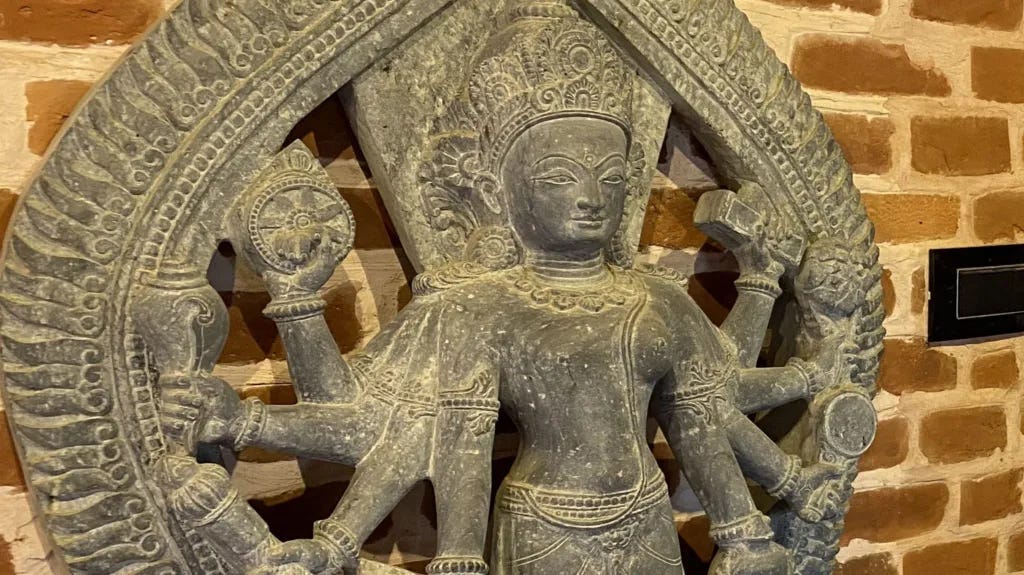'Give Us Back Our Gods': Inside Nepal's Museum of Stolen Art
Nestled along a quiet street in Bhaktapur, Nepal, lies a modest building with a provocative name — the Museum of Stolen Art. Inside, visitors find rooms filled with replicas of sacred statues, many of which have been stolen from temples across the country. Among these is a replica of the Saraswati sculpture, the Hindu goddess of wisdom, sitting on a lotus and holding a book, prayer beads, and a veena. Despite its authenticity in appearance, this statue is a replica — part of a larger collection of 45 copies created for the museum.
The Museum of Stolen Art is the vision of Rabindra Puri, a dedicated Nepalese conservationist on a mission to secure the return of Nepal’s looted artefacts. Many of these statues, taken over decades, are now housed in museums, private collections, and auction houses in countries such as the US, UK, and France. For the past five years, Puri has worked with local craftsmen to painstakingly create replicas of these statues, with each replica taking between three months to a year to complete. The museum has not received any government funding and operates through private efforts and donations.
Puri’s goal is clear: to exchange these replicas for the return of the stolen artefacts. In Nepal, statues like the Saraswati are more than just art pieces; they are part of the “living culture” of the country, worshipped by locals in temples and often treated as deities. Many worshippers, like one elderly woman who wept upon learning that the Saraswati statue had been stolen, hold deep emotional connections to these sacred figures.
The loss of these artefacts has been devastating for Nepal, which has catalogued over 400 missing artefacts, though this number is likely an underestimation. From the 1960s to the 1980s, during Nepal’s opening to the outside world, hundreds of cultural treasures were taken. The country's leaders at the time were often implicated in the smuggling of these items to international collectors.
For decades, many Nepalis were unaware of the fate of their stolen art. However, in recent years, efforts to reclaim these lost treasures have gained momentum. The National Heritage Recovery Campaign, founded in 2021 by citizen activists, has made significant strides in tracking down artefacts now housed in foreign institutions. Activists work closely with governments to push for the return of these cultural symbols.
One such example is the Taleju Necklace, a 17th-century gold-plated necklace taken from the Temple of Taleju in 1970. For years, its whereabouts were unknown, but in 2020, it was discovered at the Art Institute of Chicago. The necklace’s return remains pending, as foreign institutions continue to request additional evidence of provenance from Nepalese authorities.
Campaigners have faced significant challenges in their fight for repatriation. One activist, Kanak Mani Dixit, criticizes institutions for using "tactics of delay," shifting the burden of proof onto Nepal rather than themselves. Despite these setbacks, progress has been made. Since 1986, around 200 artefacts have been returned to Nepal, with several more repatriations occurring in the last decade. A 10th-century idol of Laxmi and Narayan, for example, was recently returned to Nepal after being missing for almost 40 years.
While some statues have been returned and reinstalled in their rightful temples, worshippers have become more cautious, often placing idols in protective iron cages. Puri, however, remains optimistic. He hopes that his museum, which will open a larger facility in Panauti in 2026, will one day see its shelves empty — a sign that the stolen artefacts have finally been returned to Nepal.
“I want to tell the museums and whoever is holding the stolen artefacts: Just return our gods! You can keep your art,” says Puri, stressing the sacredness of these objects to the people of Nepal.
In the end, for Puri and the activists working to bring these artefacts home, the fight continues to restore what was taken — not just art, but living, worshipped deities that are central to Nepal’s cultural identity.


